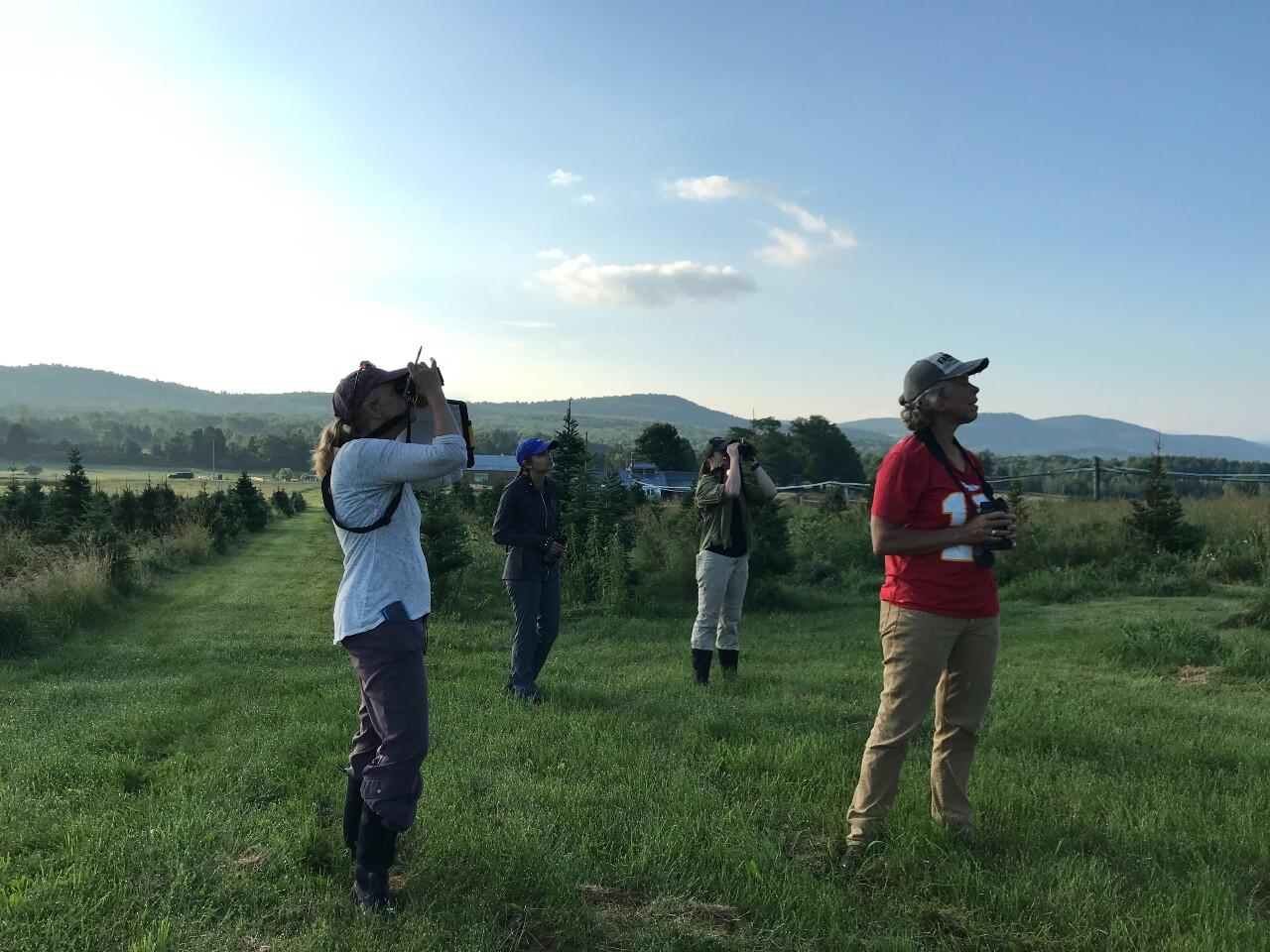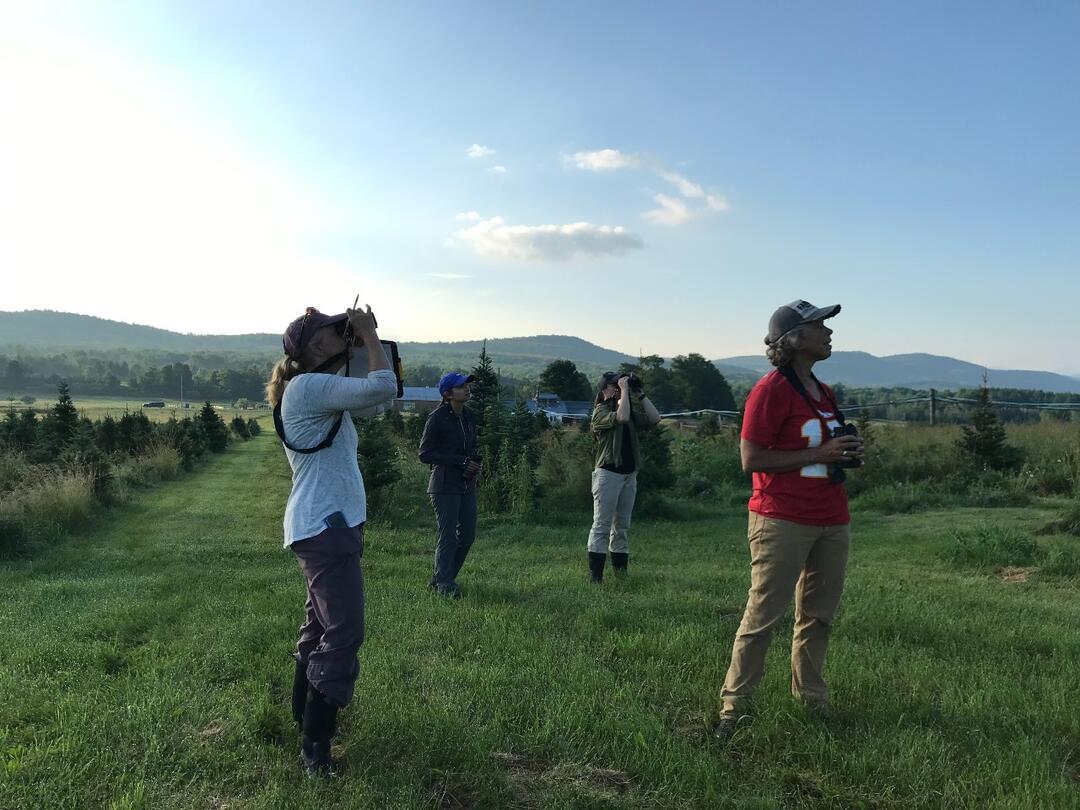This article was written collaboratively by Simran Padgett, Audubon Vermont Conservation Intern and Cassie Wolfanger, Audubon Vermont’s Conservation Research Fellow with Lake Champlain Sea Grant.
It’s 6:00am and already it’s 82 degrees—the kind of day where the air feels thick and wet to breathe in. We assemble at Isham Farm in Williston to conduct a baseline survey for birds and pollinators and make bird-friendly farming recommendations to the landowners. Birds and bees typically go hand-in-hand and when you manage for one, you usually get the other.
Audubon Vermont staff Margaret Fowle, Gwendolyn Causer, Simran Padgett, and I are joined by Jason Mazurowski. He’s an adjunct professor at the University of Vermont and a pollinator expert from the Gund Institute, which focuses research on climate solutions, health and well-being, sustainable agriculture, and resilient communities.
We’re all greeted by the warm and friendly smile of Helen Weston, one of the farm’s owners. Together with Mike Isham, she is the 5th generation to operate the farm. Originally a dairy farm purchased by the Isham family in 1871, it has had many different purposes through the years. Mike and Helen now grow market vegetables, blueberries, Christmas trees, and other crops, but this is not your typical farm. They focus on protecting the 4 B’s: birds, bees, butterflies and bugs, and manage the land with conservation in mind. They also host environmental education community events with guest speakers and musicians. Learn more about their First:Earth Summer Series – click here. Audubon Vermont is honored to be the recipient of proceeds from this series.
The relationship between Isham Farm and Audubon Vermont started when the farm became involved in the Bird-Friendly Maple Project. This project helps landowners learn how to manage their sugarbush with forestry practices that support tree diversity and vertical structure for birds instead of trying to squeeze maximum syrup production out of a monoculture stand of sugar maples. Helen and Mike have been modeling a lot of other sustainable agriculture practices that have improved the diversity of the 4 B’s on the farm: delayed mowing of hayfields until late summer to protect grassland birds during their nesting season, keeping the Christmas tree patch unmown and controlling pests with flocks of chickens, planting native vegetation plots for pollinators, and managing diverse habitats on the property including a pond and hedgerows filled with native trees and shrubs. We’re here today to give them a species list of the birds and bees that are present, and to provide additional guidance on what more they can do.
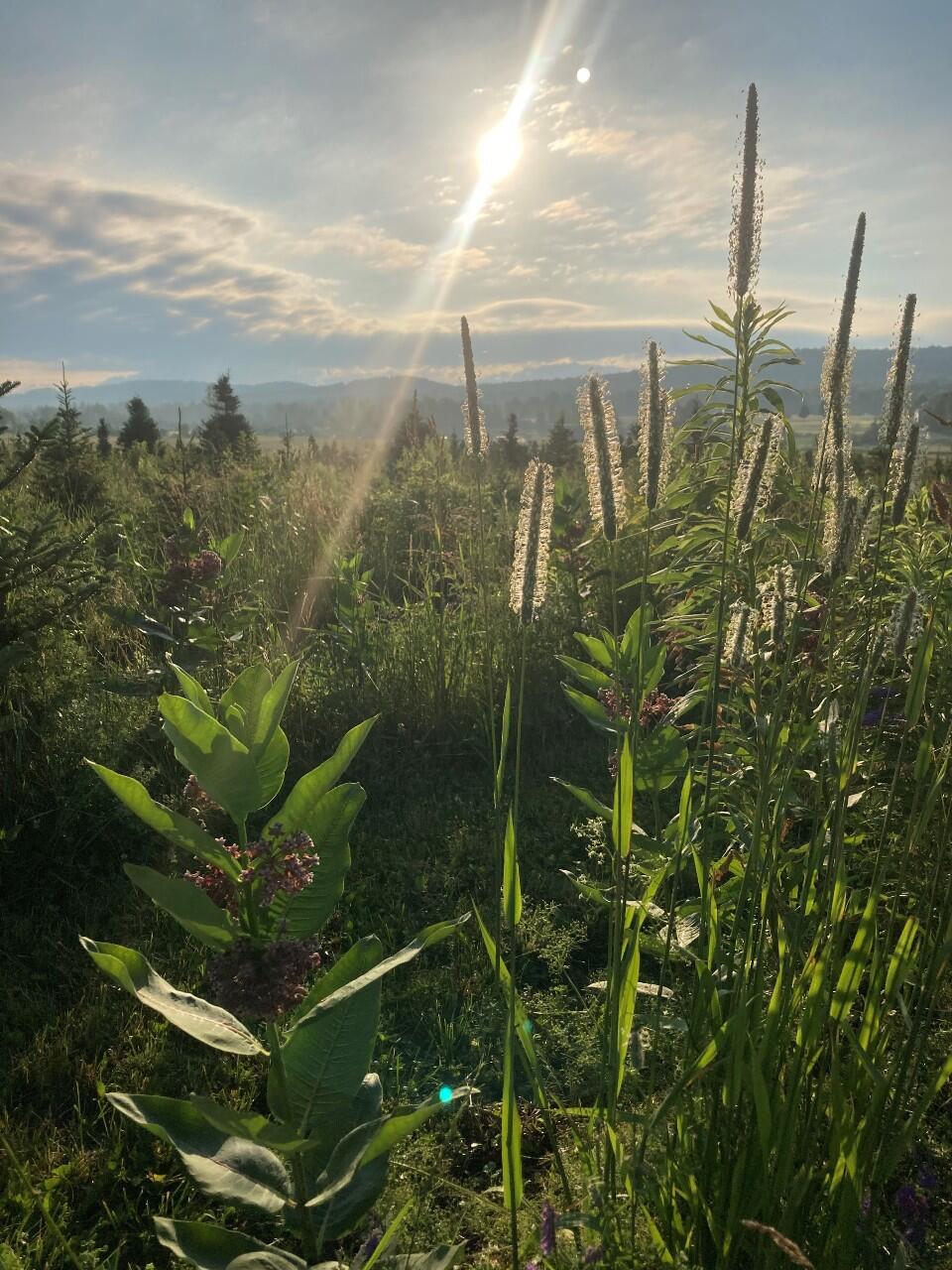
The sun is still low in the sky, but steadily rising over the mountains. A wave of gratitude hits me and it’s one of many reflections this field season where I found myself asking in disbelief “I get paid to do this?” We start our survey walking through the Christmas tree patch, which looks a little different from other Christmas tree farms you might see around since they don’t mow between the aisles or around the bases of the trees. Grasses, common milkweed, and other vegetation grows high and unruly. This means it takes a little longer for the trees to reach harvest-ready maturity, but the extra vegetation supports a greater abundance and diversity of insects that pollinate their crops and serve as a food resource for birds. Sometimes doing less, is actually doing more. The Isham’s also let their free-range chickens wander through the wonderfully unkempt rows, providing pest control. An especially curious and confident hen follows us for a few moments. In addition to stretching her legs, she too benefits from the overgrown grass by gobbling up extra insects she finds. Her eggs are sold at the farm and the idea is that happy chickens produce healthy eggs.
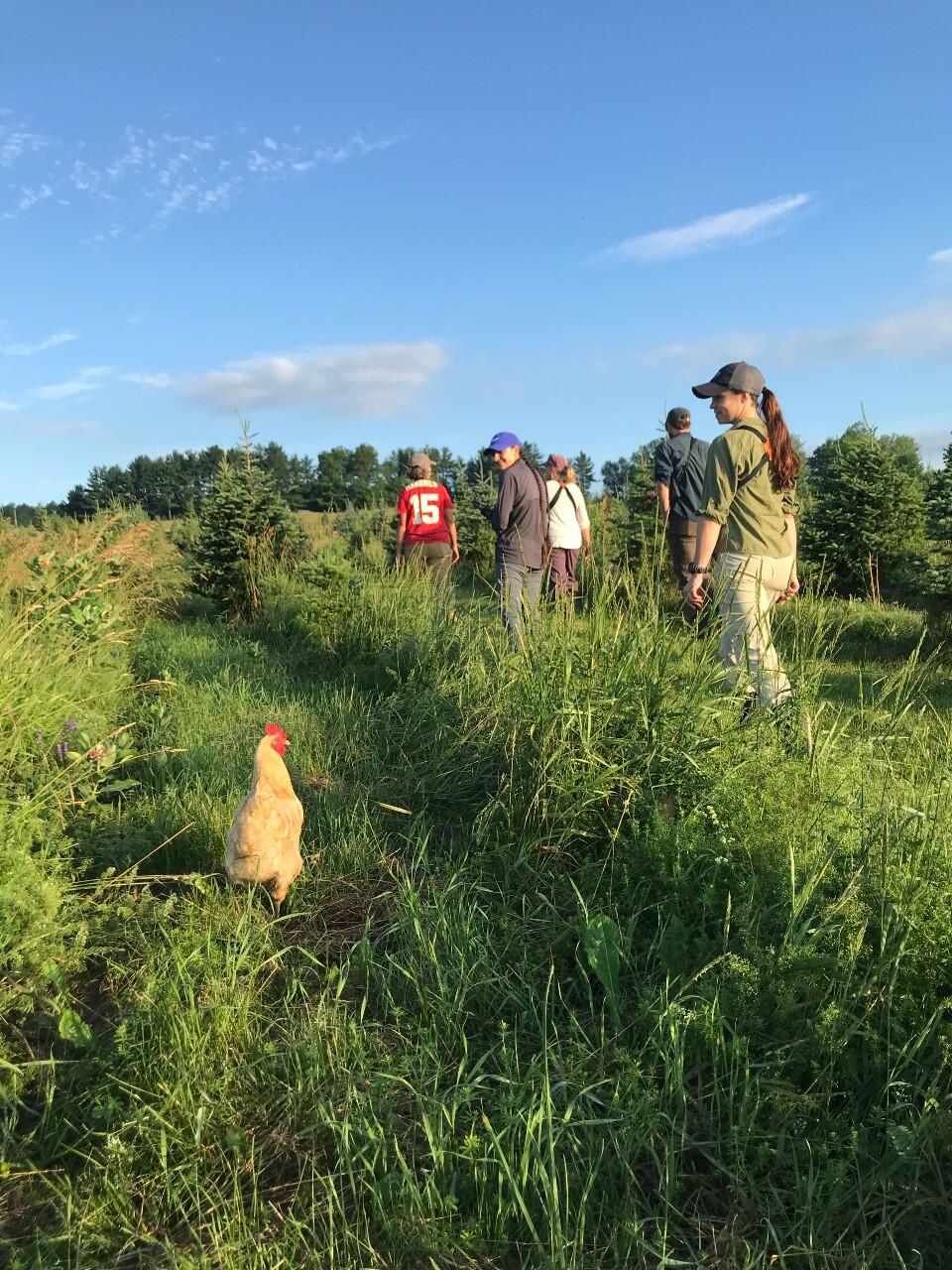
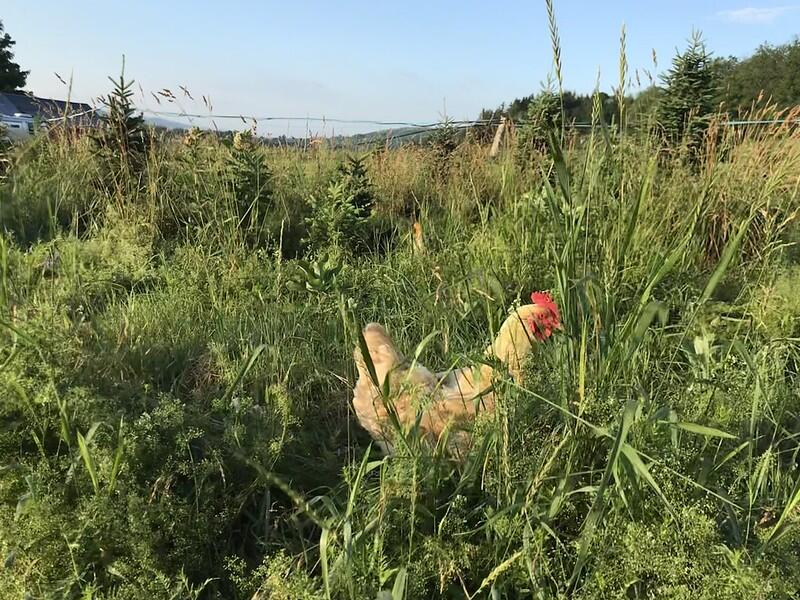
We start to see and hear our first birds of the wild variety. A Song Sparrow holds a juicy caterpillar swinging from its beak as it rests at the top of a Christmas tree and watches us from a close but safe distance. In the field edges, a few back-lit avian silhouettes are perched on high branches in tall trees and they’re too hard to identify by sight, so we have to wait for a glimpse of flight or listen to their songs and calls to make a final determination. Margaret, Senior Conservation Biologist for Audubon Vermont, scribbles 4-letter codes for each bird we see to record them on her clipboard. Gwen, an Environmental Educator and Communications Coordinator for Audubon Vermont is particularly good at bird song ID (she’s also a plant ID whiz). She is the first to spot an Indigo Bunting, a fan favorite, and we quickly all chase the vibrant blue male with our eyes. To Gwen’s ear, he says “Fire, Fire! Where, where? Here, here! There, there!” While Margaret writes field notes old-school style with pencil and paper, Gwen uses an electronic app on her phone called eBird to track the species we see. Simran and I are here to absorb as much information as we can from the pros.
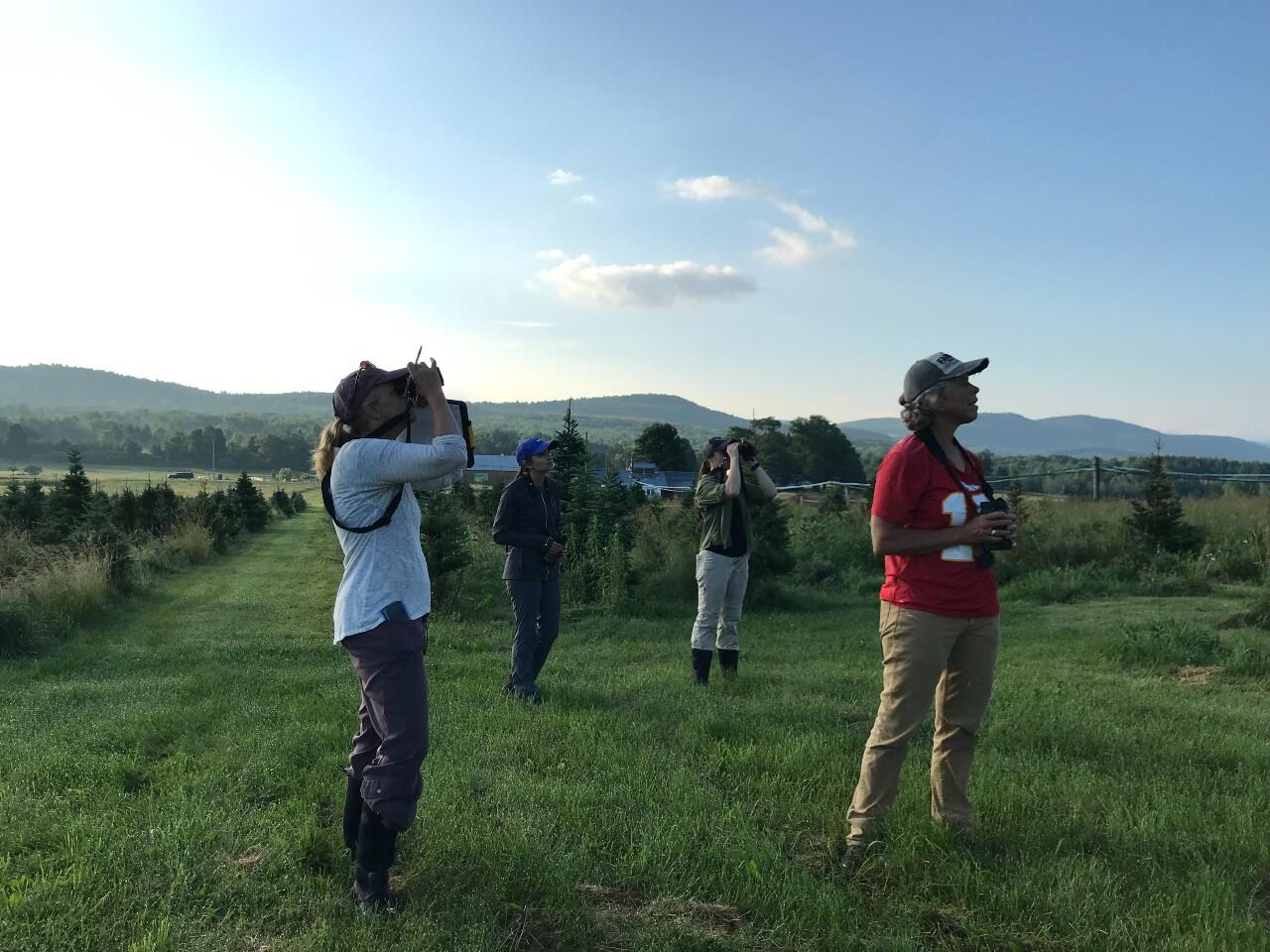
While we birders peer through our binoculars, Jason swoops his butterfly net behind us at some vegetation with a quick and confident strike and twirls it to gently trap the insects he targeted. I hear him say “Hmm, I’m mostly finding bumble bees. This makes sense because they are the first ones up in the morning and it may be too early for the others; they must still be sleeping.” This fills me with a particular kind of delight as I think about bumble bees as early risers and other bees as sleepy teenagers of the pollinator world that have yet to roll out of bed. Jason also explains that in general, it’s a little bit humid for most bees and they’re not quite as active under these conditions. Can you blame them?
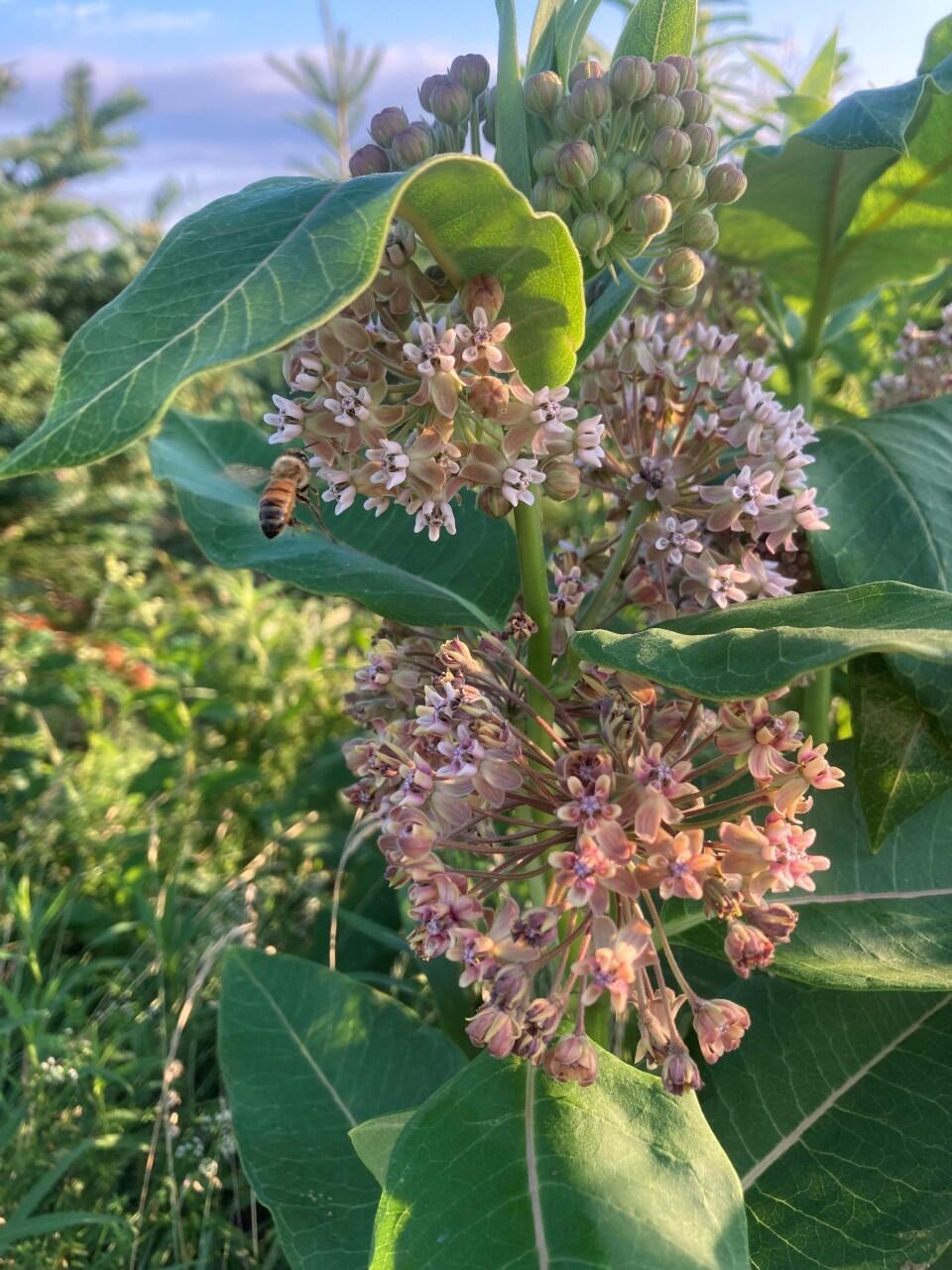
As we approach a pollinator plot, we hear a low hum. This little island of flowering plants in between open meadows is what Jason calls an ‘insectary” and is very busy with tiny bodies searching for nectar. He exclaims “Wow, this is so cool! You read about these pollinator islands in the literature, but to see it in practice in the field is another level of excitement.” Here we find more of what he was hoping for—beneficial wasps, butterflies, and moths in addition to bees. Bees do the heavy-lifting of pollinating—roughly 80%—the remaining 20% split between the other insects. Jason will later set out small colorful cups in a transect line that will serve as pollinator traps so he can collect and identify each specimen and get an idea of what species are present.
We continue our walk through a meadow that is lined with fence posts—a bird nesting box sits on each. We watch Eastern Bluebirds and Tree Swallows flit to and from their claimed boxes, bringing twigs and grasses for nesting material and insects to presumably, some nestlings hungry for some protein. Bluebirds, Tree Swallows, Barn Swallows, and House Wrens are all cavity nesters. Providing bird boxes is a great artificial supplement for these species and alleviates some competition for the limited number of natural cavities in snags or dead trees and reduces the energy they would have to expend to create new ones.
Helen says there are usually ducks at the pond, but we don’t find them this morning. I suppose they cannot show up for us every day; that is not their job. However, we do see a family of Canada Geese floating on the far side of the pond. By this time of year, the goslings are mature enough to look almost identical to the adults. As we wander by the pond we spot an Eastern Kingbird. His stark, white-tipped tail is a dead giveaway. Standing distracted at the pond’s edge by beings occupying the sky, I jump when a loud unexpected croak from a bullfrog comes from somewhere near my feet. It’s a pleasant reminder that there is more living in this space beyond what we can see.
In the forest that surrounds the pond and fields, we hear Eastern Wood-Pewees and see Eastern Phoebes among other flycatchers. This survey is starting to feel like a competition for how many habitats we can pack into a site visit. As we continue on and make our way sandwiched between forest and field, Gwen IDs plants in the hedgerow and explains some differences between invasive non-native plants and native plants. She offers a few suggestions to Helen for what to remove, what to plant, and perhaps what to transplant from one place to another for propagation. Helen has already done some work removing familiar invasives like common buckthorn and Japanese honeysuckle, but it’s a full-time job to stay on top of the management. A lot of native plants like oaks, dogwoods, alders, Joe-Pye-weed, and goldenrods serve as superstar native plant species with many ecosystem services, offer berries, and host a high number of insects. We debate exactly the count of caterpillars each tree and shrub supports, but nonetheless it’s in the hundreds and we digress—they’re a goldmine.
Our survey comes to a close as we make our way back to the barn, but it does not end without a bang. Simran and I both simultaneously hear a distinctive and unmistakable bird song that resembles “R2-D2” sounds from Star Wars. We recognize it as belonging to a grassland bird of conservation concern – the Bobolink! Without a word, we look at each other, smile, and collectively put our binoculars up to our eyes to find the little ground-nesting blackbirds flying above the grasslands Helen and Mike have not mowed yet. That one feels good to add to the species list. (Want to learn more about Audubon Vermont's Bobolink work? Read Audubon Vermont Conservation Intern Tyler Philbrook's article "On the Frontlines of the Bobolink Project.")
Before we depart, Helen shows us around the old dairy barn and her education stations out back. Walking paths and fun shapes have been carved into the grass for corralling excited young children to learning stations for Helen to teach them about the natural world around us in one of her outdoor education series. The time is now creeping into mid-morning and Helen has some work to do in preparation for the farmers market held weekly, so we go our separate ways. This is the start of a promising partnership with thoughtful landowners and wonderful ideals of what sustainable and environmentally conscious farming could aspire to be.
To learn more about Isham Farm and their First:Earth Summer Series visit their website: https://ishamfamilyfarm.com/
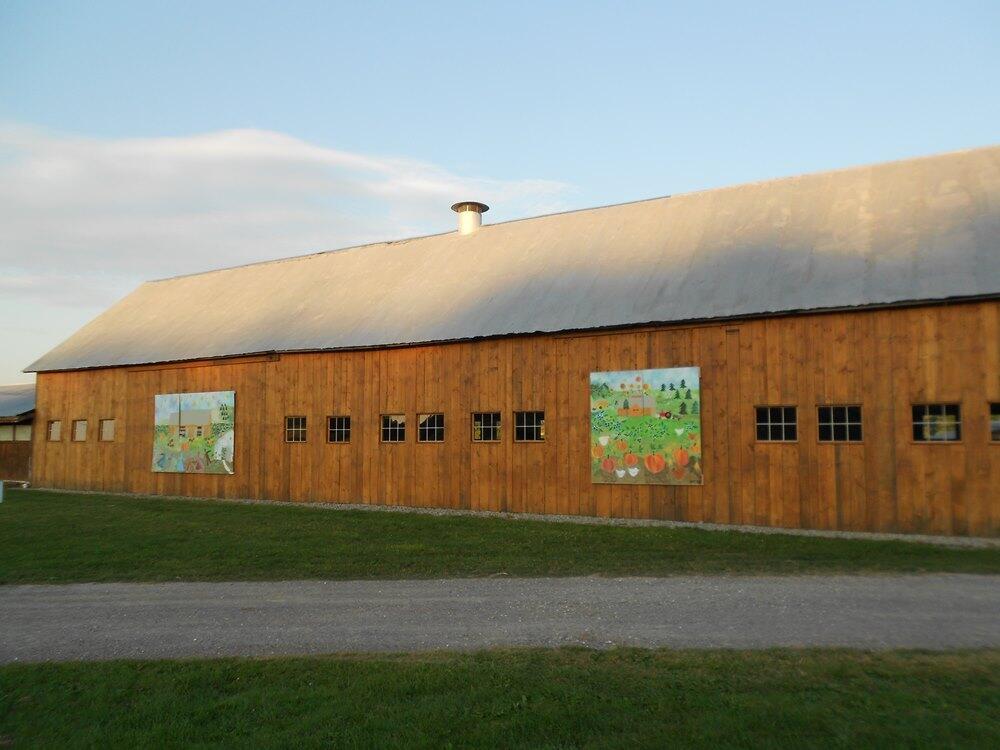
Isham Farm eBird report:
3515 Oak Hill Rd, Williston US-VT 44.39162, -73.09453 Jun 29, 2021
6:19 AM
Traveling
1.33 miles
138 Minutes
All birds reported? Yes
Comments: Submitted from eBird for iOS, version 2.6.2 Build 2.6.18
7 Canada Goose
3 Mourning Dove
1 Yellow-billed/Black-billed Cuckoo
4 Killdeer
1 Wilson's Snipe
1 Northern Flicker
1 Eastern Wood-Pewee
1 Eastern Phoebe
2 Eastern Kingbird
5 flycatcher sp. (Tyrannidae sp.) -- Recently fledged chicks with parents
3 American Crow
1 Black-capped Chickadee
2 Tree Swallow
1 Barn Swallow
1 White-breasted Nuthatch
1 European Starling
1 Gray Catbird
2 Eastern Bluebird
1 Veery
1 Cedar Waxwing
7 American Goldfinch
1 Chipping Sparrow
1 Dark-eyed Junco
1 Savannah Sparrow
1 Song Sparrow
3 Bobolink
2 Red-winged Blackbird
1 Common Grackle
1 Ovenbird
3 Common Yellowthroat
1 Blackburnian Warbler
1 Scarlet Tanager
2 Indigo Bunting
Number of Taxa: 33

